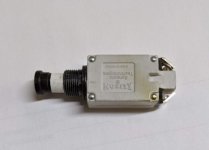I’m working on the design for my RV-8’s electrical system, which will include a rear battery and battery contactor. I plan on having a B&C alternator (and regulator) and the main bus feed hooked up to the starter contactor on the firewall (the B lead will be hooked up to ANL fuse). I also plan to have something similar to an endurance bus, which will be fed by the main bus and a separate relay from the hot side of the battery contactor, to which the Monkworkz generator will also be connected (via a contactor a la Dan H.’s simplified approach). I will have a G3X system and intend to do IFR in IMC and want plenty of redundancy. So the avionics will, for the most part, be on the endurance bus.
What I’ve been thinking about is how to design for smoke in the cockpit scenarios, since I really want to avoid having to shut off the endurance bus. And to answer that question, I need a better understanding of what is usually going up in smoke in those scenarios.
If every device is on its own circuit, and each wire to these devices is hooked up to the right sized breaker/fuse (which should blow if there is a fault on that circuit before the wire burns), then what is most likely going to be smoking? Is it the bus feeds, the starter contactor feed, or something else, like the devices themselves?
What I’ve been thinking about is how to design for smoke in the cockpit scenarios, since I really want to avoid having to shut off the endurance bus. And to answer that question, I need a better understanding of what is usually going up in smoke in those scenarios.
If every device is on its own circuit, and each wire to these devices is hooked up to the right sized breaker/fuse (which should blow if there is a fault on that circuit before the wire burns), then what is most likely going to be smoking? Is it the bus feeds, the starter contactor feed, or something else, like the devices themselves?





